The Beginnings

Roger On North Saskatchewan Inspection Trip
This chapter is a combination of my personal story and how being an AME in the Transport Canada (TC) positions I held influenced AME licensing and training. It is also a story about some of the team members I had the privilege over the years to be associated with. On reflection, I am astounded at all the extremely well educated, trained and competent people I met and worked with. I was exposed to the most senior levels of government in many parts of the world. Senior Military and Civil Aviation leaders from many countries and industry tycoons as well as thousand of ordinary folk who made all the systems work.
My life began on June 19, 1944, in Bexley, Kent England. It nearly ended two weeks later when a German cruise missile, then know as the V-1 Flying Bomb, landed in our garden and exploded. The V-1 was also known as the, “Doodlebug”, by the English, a name taken from the distinctive sound of its ramjet engine. My father was a Canadian Soldier, from Alberta and living in Saskatchewan when he joined the Army. He was originally to be a sniper but he told me that as the war was starting to go in the allies favour they decided they needed truck drivers more than snipers. He was an excellent shot as I found out years later hunting with him. While we were being bombed he was serving in Normandy, having landed on D Day plus 6, which would have made it June, 12, 1944.

B25-Liberator-Germany
After the rescuers pulled mum and me from our wrecked home we went to live with relatives. Unfortunately other people on our street were killed. Dad was at the big battles around Caen and at the Falaise Gap. He did tell me a few stories after I was an Army cadet. He told me of one event where German shells flattened one of their truck tires and two of his company were trapped under the truck and burned to death. They tried to hook a tank to it to pull it off of them but could not do it fast enough. Apparently it was against Army policy to dig a slit trench and drive a vehicle over it. The men did it to keep the rain off them as they slept. It cost them their lives. He was hauling shells to the guns which were firing all day and night in the battle at Caen. As we now also can see from Allied and German film, rather than just books and personal stories, it was heavy fighting and Caen was destroyed. They were up against the SS Divisions and Hitler youth who would not surrender. He also witnessed the aftermath of the Canadian defeat at Verrines Ridge where German guns caught the Canadian Tanks in the open and destroyed most of them. Another story he told was how they were strafed later on in France by the Luftwaffe as they were parked along narrow of trees beside afield. Dad thought it was funny because one of his buddies was in an outhouse and a shell went through it. Wartime humour I guess. The Canadian Army advanced through Belgium, Holland and up into Germany and the war ended. Dad had a miserable job of emptying some prison and concentration camps. He stayed on for a few months in the occupation army, and then was ordered to Canada to prepare to go to the Pacific War. Thankfully, the Atomic bombs convinced the Japanese to surrender before many Canadians got into that brutal war.
My Grandfather on my mother’s side was a 35 year Royal Navy Veteran. He was a powder boy on a battleship at Jutland and the ship was sunk in the great battle by the German High Seas Fleet. He had 3 more ships sunk out from under him in the Great War. After the War he spent 10 years on the Yangtze River on a gunboat helping keep Chinese warlords separated. He told mum that when it rained they stopped fighting and sat under their umbrellas.
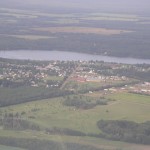
My home town, Big River Sask
While all this was happening I was growing and in 1947 we were called to be transported to Canada, to Saskatchewan to be exact to meet my Dad in Regina. I had no idea who he was of course and I was nearly 3 years old. Mum said good bye forever to her family, as she never did see them alive again. It must have been tearful, but Mum told me later it was expected as in those days poor people did not return from the colonies or other lands, not like today’s migrants. She was also excited by the adventure. Dad had a job at Imperial oil but wanted to live in the bush and make more money cutting timber. So we ended up out in the bush near Big River, Saskatchewan. Now Mum and Dad were together and like many families, including my wife, Gerry’s family, soon many more children started to arrive. That was before modern birth control and families were big. We were poor but so were most others. I lived a rough lifestyle, living closely with the Cree Indians and Métis who worked for dad. It was bush life and bush food. One of the Cree families gave me my first dog. We ate lots of wild fruit and meats. Later we moved into town and life improved but we did not have electricity until 1959, no TVs when I left in 1963, at least not in our house.
I spent a lot of time hunting and fishing around Big River. I joined the Royal Canadian Army Cadets, the First North Saskatchewan Light Infantry. While with the Regiment I went on three summer camps over in Vernon, B.C. a most valuable experience. It was all infantry training, and going on exercises in the mountains. The stories from my Mum, Dad and the other veterans and war brides really gave me a desire to travel and to serve in the military. I always thought of the Army first but actually ended up in the Royal Canadian Air Force. I never once considered the Navy. I will come back to that story later.
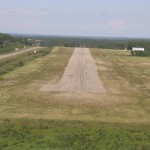
Typical northern runway
If you have ever drawn your life map and noted key decisions you will be amazed at where it leads your mind. The roads not taken can become great mind games as you wonder, “What if”. If I had stayed and worked in Big River my life would have been quite different. As it was I realized working as a labourer on local farm was not going to work for me. Nor was I thrilled by working all my life at the local lumber mills. Nothing wrong with that and honourable, decent work, but it was not my wish. I wanted a trade because my Dad had said, “Get a trade and you will always have work”, and to travel. My school marks were very good until I was seventeen or so and discovered girls and beer. Then my marks deteriorated, this affected my later work as my math skills were less than desirable. My love of science, chemistry, geology, zoology, archaeology and history served me well all my life. Although I graduated, one of the few that did, I later went back to school, technical colleges and a few short university courses, no degree, to improve my formal education. I have always been a dedicated reader, literally thousands of books and documents on all subjects but especially biographies, politics and all types of travel and history all of which aided me greatly in more senior positions.
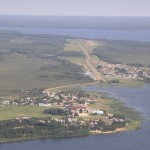
On approach in northern Sask
One such decision was made in Regina in 1963. I applied to join the Army’s Officer Candidate program. I was accepted for the interviews and selection process to be held at the recruiting office in Regina. I received my travel papers and bus tickets and was ordered to report on Tuesday. I took the bus to Regina on Sunday and spent Monday looking for work. I soon found out you needed a trade to find anything worthwhile. I reported as ordered on Tuesday at 0800 and was soon being chastised by a Sergeant as they thought I was to report Monday. I argued that the orders said Tuesday and I showed them the papers. By now a 1st lieutenant was there as well. To make a long story short I thought I was being unfairly treated and got angry and told them to shove the army ,you know where. That ended my officer candidate experience. So what now, having coffee I met a farmer who need help. I worked all summer dawn to dark. I knew this was temporary even though they were good people to work for. One day on a trip to Regina from the farm south of Regina I saw an Air Force recruiting office and joined up. Then it was back to Big River for leave and to wait for my reporting date in Sept.
Royal Canadian Air Force and the Canadian Armed Forces

Rogers and CF 104 – France, 1964
I received my RCAF travel instructions and proceeded again to Regina where I boarded a train loaded with a lot of young Air Force recruits on our way to St.Hubert, near Montreal. The basic training, of some two months, was not as rigorous as the Army, so it was not an ordeal for me. It was fun meeting a lot of new people and seeing Montréal, I never had seen buildings so big. During this time we had to be tested for our trades. I was told I could never be in administration, somewhat funny since the better part of my career was in management and administration. I had a choice of two paths, electronics or police work. Since I tried to join the RCMP and was refused due to one poor eye, I nearly choose military police work. My life would have been very different. I knew from that experience that I could not be an Air Force pilot. They asked me to try piloting as my high school passing grade was good enough to be a pilot but I declined as I knew I would fail the eye test. I choose electronics and selected airborne electronics as my trade choice. This led to my next posting to Number One Radar and Communications School in southern Ontario near Lake Huron, Clinton. It was a very small and beautiful town to be based near. My wife, Gerry and I recently visited the base, it is in ruins but Clinton is still the same.
Life was quite different form basic training. Basically it was going to school 5 days a week. I would make a quick run to the mess hall for lunch and back to class as a typical lunch break. I was not doing very well in my first few weeks as my poor study habits from my last year of high school were catching up to me. A sharp verbal up braiding from one of the sergeants smartened me up and I applied myself and did very well on the course. There were the normal small problems I got into which caused me to get a few extra duties, the worst one being cutting grass around the base fire hydrants for a weekend while my buddies were off to the beach or Buffalo, New York. The Clinton based time passed and I completed the course and was sent onto Camp Borden, north of Toronto. I met Gary Watson there and became good friends, a friendship which has lasted until today. Gary was best man for me when I married Mireille, in Aalst, Belgium in 1966. She died 29 years later and Gary was a pallbearer for her. The circle of life is interesting.
Camp Borden was a very old Canadian Army base. I believe the armoured corps was born there in the nineteen twenties. It was also one of Canada’s First World War airbases. We attended the Aircraft Maintenance School. It was designed to teach you how to use hand tools, shop tools, aircraft marshalling, moving, fuelling and general safety rules for working around aircraft. Growing up in the forests of Northern Saskatchewan and using weapons, tools and machinery I thought the course would be a waste of time. However, The RCAF was smarter than me as the course was great and I learned a lot about basic tools. Borden is located about 100 Kilometres north of Toronto so it was a natural draw for the weekends. Once the Borden course was completed it was off to Cold Lake, 10 Field Technical Training Unit (10FTTU) or 10 Foot Two as we called it, for the CF-104 Starfighter aircraft course.
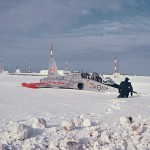
CF5 that landed without pilot in 1969
Cold Lake was also the CF-104 training base for the pilots and had a couple of operational squadrons as well. The experimental test squadron (AETE) was base there as well. I was to become more familiar with AETE many years later in TC. May of our TC Flight Test Pilots and Flight test engineers came from there and Western region contracted some engineering work to AETE in my time as Director. It was my first operational base and very exciting. The course leader informed us that out of the 12 students on course, 10 would go to European Bases and two would stay at Cold Lake. As my mother was from Britain, I had an aunt and two cousins still there, my Grandparents had both died rather young, and I studied hard as I wanted a European base. One always wonders if they had lived a few more years I would have met them again after 21 years of separation, alas it was not to be. So I did study very hard and made an excellent passing mark and was assigned to leave for Europe. Big River, my home town was only 400 kilometres away in the bush of Northern Saskatchewan, so I went home for embarkation leave.
I left Big River and was away from it for the next 4 years. I went back to Cold Lake and packed up my little bit of kit, one kit bag was all I owned at that time. I flew as a passenger in a C-119 Flying Boxcar carrying a J-79 Engine to Edmonton, Alberta. It was winter and extremely cold and I never got warm in the belly of the old Boxcar. In fact the snow never melted off the engine container! From Namao Air Base I flew on a Convair to Trenton, Ontario, where I bordered a Yukon for France. I recall watching oil draining along the engine cowling the entire long trip from NAMAO Edmonton to RCAF Station Trenton. After Trenton it was a long Trans Atlantic crossing, low and slow about 14 hours if I recall correctly, in a Yukon Transport. The Yukon was based on the Britannia but powered by Rolls Royce tynes engines as a turbo prop. I arrived at Number 1 Wing Base, in Marville, France between Christmas and New Year 1964. We went from minus 25C to green grass overnight.
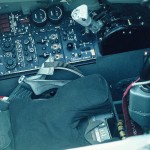
CF104 Cockpit
Life in Marville was wonderful for a young man with no dependants. Those were the days when the RCAF was at full strength with several thousand aircraft and about 65,000 men and women. It was essentially in those olden days a man’s world. There were very few, if any female maintenance people and few pilots. Women were in the basic administration trades, medical services and such but it really was mostly male organization. The barracks were full of us young men with a few old timers to keep order. The Americans called them,”lifers”.
When we arrived over Christmas we had a few days off and Gary and I went to Paris for New Years. Once back we were assigned to our squadron’s maintenance lines. Our job was at the flight line in a hangar far across the airfield about 2 kilometres from the base facilities. We soon found old American cars to buy so we did not have to go by foot or bum a ride. Sometimes I walked back from the hangar, it was especially fun when we were night flying. I enjoyed the noise from the CF-104 Pratt and Whitney J79s as they lifted off the aircraft in full afterburner. Sometime the aircraft took off in sections of two which was an even better show.
Gary and I ended up being roommates in Block 32. The room each simple furniture but were comfortable. Being an operational base we did not have many barracks inspections. We all kept our places fairly clean and had sheet exchange once a week, needed or not. Meals were all at the airmen’s mess. Good food and lots of it was always ready for us. Since we worked shift work we could also go to the mess at midnight and stoke up on steak, eggs, etc. We were well fed. Later we discovered the American Army messes close by served chocolate milk, so we always liked going to them. RCAF messes only served white milk, oh, what is important when your 20.
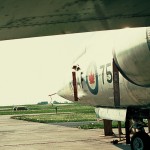
CF-104 France, 1965
Technically our jobs were varied. I recall being quite upset when upon reporting for duty to the corporal in charge of our team that I was going to be refuelling aircraft. I saw myself as a great electronics technician who could handle anything on the aircraft. I objected but he was not impressed, sometime later I realized how smart he really was. My first days on the flight line were rather terrifying. I did not know if I was going to be run over, blown up or burned as I learned to work around some 50 CF-104s coming and going. There were vehicles everywhere as well as the aircraft. I soon learned that visiting NATO aircraft would also require fuelling. Such aircraft as F-100’s, F-105’s, Sabres, B-66’s, Fiats, Hawker Hunters, Mirages, Mystere’s, Lightning’s, Canberra’s and later F-4 Phantoms were commonly serviced. Some were heavily armed so it was a careful business. For sure I have missed many aircraft types, added to that were the occasional helicopter and transport category aircraft, however, most of them went to the air movements unit on the other side of the base close to all the major base buildings.
Once I became familiar with fuelling, parking, installing safety pins and other routine servicing tasks. I was allowed to actually start fixing defects. As I was qualified and passed my trade exams I could even make logbook entries and sign out my work. Moving on up! Some bright career manager thought I should be transferred to the avionics shops. I worked there for six months, six months I hated. Bench repair was not my calling. I was not good at it as I detested it. Obviously someone caught on and I was transferred back to the squadron line. We had a centralized maintenance system and worked for two squadrons, 441 and 439. I was happy again.
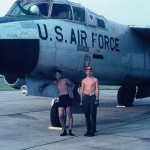
Skinny days, 1964 Gary Watson and Roger servicing a USAF-B66
During this first two years I saw a lot of aircraft crashes and a few of my friends were killed in auto accidents. Lots of fog and a good mix of speed and some alcohol did a few maintainers in. The pilots mostly died in aircraft accidents. Being on a funeral honour guard was not a rare duty.
Social life revolved around the Airmen’s mess. When Hellyer created the Canadian Armed Forces and made the RCAF disappear for 50 years, it became the corporals and airmen’s mess. Most of the members were single so card games were always on, poker being a favourite. One of our team was a sharp poker player and many married guys lost a lot of their pay checks to him. I wonder what they told their wife’s.
Shuffle board was a favourite pastime as well. Dances were common and well attended. We soon learned to avoid them as the only women were married unless you brought your own from the local French towns. That is when I decided to learn French. So we soon learned where to go to meet the female part of the European population. On place was Oostende, Belgium, where it seemed there were 3 women to every, man. I met Mireille Snoeck, my first wife there. This event changed my second two years in Europe substantially. Gary Watson who was my long time friend and roommate acted as my best man. He also organized most of the booze and attendance from our team members. We were both hung over on my wedding day from the stag the night before, we smartened up enough to get me married and after the first toast were OK to go. Mireille’s parents only spoke French and Dutch (Flemish) so my French decision paid off. At that time Mireille’s English was very rudimentary.
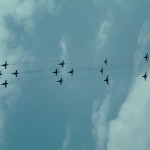
Every day an air show – 1 Wing France 1965
Newly married and feeling rich with my new married allowances it was back to work. I was welcomed back by a Sergeant who said,”Congrats Beebe, now we can get some work out of you”. So much for sensitivity in the RCAF. At this time the French President decided to stick it to the Anglo Nations, Brits, Canadians and Americans. Apparently he felt snubbed during the war by General Eisenhower. Anyway he decided to leave the military part of NATO and kicked us out of France. For the Americans it meant hundreds of bases and perhaps 300,000 men to move. For the Canadians it meant closing Marville and the HQ at Metz . It was small potatoes in comparison to the US problem but still a big job for us to accomplish. The Americans organized continuous trucks convoys and in a few days were gone. European trucks were much smaller than the American ones so it was quite a site to see the big North American sized trucks barrelling down the French Highways mostly driven by southerners, European trucks were much smaller.
During my single time at Marville, Gary and I teamed up with a few others and set out to see as much of Europe as we could. We toured Spain, Italy, Germany, Austria, France, Holland, Belgium, Luxembourg and several other countries. One New Year we went over to London and came back broke and ate two week old sandwiches left over from RCAF box lunches in the trunk of our car. We especially enjoyed touring nearly all the World War One and Two battlefields. We also found some of the older sites like Waterloo and Roman battle sites most interesting. We set out collecting old shell casings, etc, including one shell that turned out to be live. Chance number two to have been killed by German ordnance. We even caused a bit of stress for ourselves by crossing over the East German line and running back to safety.
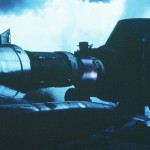
CF-104 Afterburner check, France 1965
There were the usual aircraft accidents and following funeral parties, where we were the honour guard. We saw some very interesting aircraft coming and going from Marville. The routine was Monday to Friday, with a morning shift and an evening shift, made more exciting by alerts and tactical evaluations. It was like living in a perpetual air show. In those days fighter pilots were allowed to show off and they did. Like in Top Gun they buzzed the tower and the base, all kinds of them. Some were relatively quiet like Hawker Hunters; other had extremely loud afterburners like the F-100s and F-101 Voodoos. Sometime they would sneak up and really startle you. I soon learned to watch for black smoke on the horizon a dead give way for a one hundred series fighter coming at you.
One year before that we had deployed to the USAF base at Etain while our runway was being resurfaced and the base renewed. It was quite a sight to see 60 CF-104s in formation as they arrived over the USAF Base. An old lifer corporal told me,’ “Beebe, they are closing the base”. I asked why, he said, “Every time they fix up a base it gets closed”. He was right. I was assigned to the advance party to move us to Lahr, Germany. A great move and it led to a great two years in Germany. We arrived on a French base with Turkish toilets and not much in the way of comfort in the Barracks. I soon moved my wife into a German apartment and lived off base in Freisenheim and later in Lahr.
Operationally we shared the base for 6 months or so with two French Air Force Mirage Squadrons. A lot of competition ensued. One can only imagine the noise at four in the morning when 50 Canadian CF-104s scramble along with 20 French Mirages, going out over the German villages. No one really seemed to care about disturbing people in those days. I guess with Russians only 10 minutes away people kept such things in perspective. When the Russians invaded Czeckslovakia, I thought we were into a hot war. I left my wife and her father and mother and thought I may not see them again. By 1200 hours we were stood down and life went on.
As before there were lots of routine days maintain and servicing NATO aircraft. I was on the flight Line my entire Lahr, Germany two years of posting. Saw some interesting things happen. German dual 104 losing the rear canopy and being damaged beyond line repair. The Luftwaffe put it on a truck and took it home. I also saw a CF-104 on fire, circling the base, we all waited to see if the pilot would eject. He did not and landed. Afterward he told us he saw the fire reflecting of the wing tip fuel tanks but he had no fire warning light. He got some sort of medal or mentioned in dispatches but most other pilots though he should have bailed out. Another vent sticks in my mind. One Saturday I was working and ducked out to steal some cannon shells from the French Mirage for my collection. We had attest flight that day, my team member were doing the launch. It came down the runway, rose up and I heard a “pop”. It then exploded and the pilot bailed out. It crashed, maybe 300 meters from me on the main runway. Fire was down the runway for at least 500 meters. I saw the pilot drift into the fire and felt sick. In reality he drifted forward by momentum and landed on the other side of the fire wall and was not hurt.
Mireille and I got an interesting side trip when I was assigned temporary duty in Sardinia at the bombing range. It was great fun driving around Italy and taking a ferry to Sardinia. It was hot and we camped by the sea for eight weeks. I worked 24 on and the 24 off. The Germans and Italians shared the base with us. The Germans and Canadians worked all day long in the 120 degree F heat and the Italians slept!! Lots of bomb practice trip, a few accidents, and many ad hoc showers for the pilots who had completed special trips. The fun was dumping cold water over them as they climbed out of the cockpit after special events, like achieving 1000 hours in the 104.
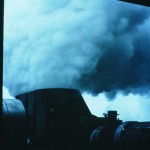
CF- 104 Engine run, France 1964
I have concentrated a lot of my writing on the things I remember on the social side. But it was serious business and for all the family and friend stuff we knew it could all end if war broke out. We also knew we would one day be rotated back to Canada or another place in the world. I asked for a one year extension which I received and stayed on in Germany. I received my posting to Cold Lake, Alberta, to a CF-5 Freedom fighter squadron, also equipped with T-33s. Some of my friends, who stayed in the now renamed Canadian Armed Forces, went back to Europe two or three times more. I sometimes wonder if I would have gone back. So many of the young pilots I worked with later became very senior officers, one or two became Lt. Generals in charge of the entire Air Force.
Cold lake, the second time around was a bit of a shock. Firstly it was one of the most bitterly cold winter’s ever, down to minus 59 F one morning. The cold lasted for weeks. Gary Watson was also transferred there as was Richard Brownfield, a pilot, also from Big River. The second shock was the cost of living and my much diminished salary, as I lost my overseas allowance. My poor Belgium wife who had never experienced anything less than – 10 for a day or so in Europe was in shock. The work was much the same fixing and servicing, except in bitter conditions. The up side was we did have big warm hangars to work out of.
The Squadrons (434) reason for existing was to provide close air support to the Army. We were part of Mobile Command which meant I was actually in the Army or at least assigned to it. Rumours floated around that we would all be sent on basic infantry training. I had done that before as a cadet. Our pilots practised dropping bombs on stuff built by the Army out on the Cold Lake Primrose Range. One day I flew out in a twin helicopter carrying several skidoos in the cabin. They started to vent gasoline and we had to set down in an emergency and drain some fuel out of the skidoo tanks. It was quite scary at the time. We also had an interesting incident where two pilots bailed out of a dual CF-5 and it landed itself. We went out and brought it back under a big Chinook helicopter. It was made into a trainer as it had no real damage but who could tell what stresses it had underwent. The story appeared years later in an aviation magazine. I have lots of photos of the recovery.
I had to do something to make more money. One day I came home and my wife had an advertisement for avionics technicians wanted at Wardair. I applied and two weeks later left the Canadian Armed Forces.
How did all this affect my civil and Transport Canada career. Well firstly the RCAF basic trade training was very valuable; it gave me the equivalent in those days of a technical college level education for free. The work discipline and airmanship practices were excellent and carried over into the civil work. RCAF experience was well appreciated by industry as a lot of the industry managers were ex- military aviation types, some RCAF, some Army and Navy. The chance to work in a large organization with its many rules and personalities was very valuable as well.
The downsides were the heavy reliance on rank for allocating tasks limited ones experience. The chances of working as a single technician were few and far between which limited the opportunity to gain self confidence in your abilities to manage and develop your trade skills. These were soon to be rectified in my civilian career.
Wardair – Transition to Civil Aviation
I walked into Wardair’s hangar not really knowing what to expect and with some old time air force types last words in my head,” You will soon be back, civilian life is so tough”. I met my supervisor and some of my new mates. The first thing I had to do was to go buy tools. I had been able to leave the air force with some tools but not enough. I remember going to Sears and buying craftsman tools. The first job I was assigned was checking out the EGT system on each of four B707 engines. I never worked on EGT systems in the RCAF, I was shown where the manuals were and told to get at it. I did and did the job successfully. This was a big change from where I would have expected a training session, then practical test and then be approved to do it. It was the beginning of a quick transition to the civilian approach to technicians and maintenance.
The overtime was a pleasant shock as I was not used to that in the military. I found my salary was doubled with overtime and I soon owned a new home, newer car and furnishings. The work was very tough for the first six months as I had to learn the entire B707 aircraft, a change from the more limited trade structure in the RCAF. When the aircraft were flying I worked on components, in the engine shop and even some sheet metal work. I will admit sheet metal work was not my strong point. My greatest love was system troubleshooting which consumed a large part of my time. Then the aircraft started to come in for the heavier checks right up to the “D’ Check level. We tore it down to its bare airframe and put it all back together. We installed modifications at that time as well. I leaned a valuable lesson when installing 60 parameter flight data recorder. I ran wiring right back to the tail section and when I got there I only had about 6 inches of wire to spare. I never skimped on wire length after that.
In addition to real AME work there was still the old servicing work as well. From keeping the diesel powered power supplies fuelled to throwing baggage when snags were all fixed. At Wardair we did all sorts of work and even when we became unionized it stayed the same. This made Wardair’s maintenance department very efficient. Later at Air Canada I saw how strict shop rules lead to much inefficiency. Plus it made the job more difficult and less interesting.
I soon was noticed for my skills and became a part of the teams that went to other cities around western Canada to turn around the B727 and by now the two B707s. That meant working in Winnipeg, Calgary, Saskatoon and Regina. We had a base in Vancouver, Toronto and Gatwick, England. I was frequently on my own which really added to my self confidence and esteem. I was offered a chance to become a Flight Engineer, a group whom I really respected. I declined as their work hours were terrible just like the pilots. In addition, I was happily married and saw the higher divorce rate among the flight crews due to long periods away from home. I wanted to stay married. They were very knowledgeable on the aircraft and would teach short courses, system specific, in the hangar and help out on the big checks. I found their troubleshooting in flight most helpful when fixing snags on short turnarounds. When I arrived at Air Canada they had switched all Flight Engineer positions to second officer, pilots, were great people but whose agenda was to get to the first officers seat. They did not do as much detailed in flight troubleshooting as the AME based Flight engineers. A service I missed on the line at Air Canada.
Wardair had started out international charters using a DC-6 aircraft. It was still parked near our hangar in Edmonton. I got to do run-up’s on it to keep it serviceable along with Dan McNiven. One day I heard in the lunch room that Max had bought some 6 Bristol 170 Freighters from The Armed Forces. I was shocked as I had been an honour guard at the phase out of the aircraft from the RCAF. That aircraft were soon to arrive and carried me and my wife, Mireille, to Yellowknife to begin a new experience working in the summer high flying season in the north and arctic. We lived in a motel room all summer and I was able to fly right seat in the DHC-6 all over the north. My job was to keep it serviceable and help out the pilot by loading/unloading and fuelling. In reality I got lots of hands on flying time as they would let me fly while they were catching a few winks. Of course they did the landings and takeoffs. I remember one day we hung above a point on the ground without moving ahead very much as the head wind was so strong and the Otter could fly so slowly.
I did a lot of work on the Bristols as well but most of that was in Edmonton area. Spring and fall float and ski changeovers were always fun. Dan would take us as a crew to Cooking Lake East of Edmonton and set us to work. Sometimes we dropped tools in the Loon shit and had big magnets tied on a string to fish them out. I recall Dan McNiven up to his neck in the black loon shit mud. Dan was a very hard working man and a great chess player. I never did beat him at either one. I also remember Dan meeting our family at Gatwick on one of our trips to Belgium to show off the youngsters to Mireille’s relatives. We had a great time pub crawling and catching up on things. I am sure the English thought we were nuts. When we misbehaved too badly we said we were Americans!! I remember one older English lady, around 80 years old, asking me which colony I was from!
Some of the great people I recall from the Wardair days were George Bell, Director of Maintenance, Gunther Moellenbeck, Maintenance Manager and Ken Burgess, Crew Chief. I learned a lot from all of these AMEs.
I accepted a transfer to the Toronto Base and another move was on. I believe I moved around 35 times in my aviation career. After two or three locations in the Toronto area we settled into Bramalea, just north of Pearson international airport. It was mostly farm land around Pearson in those days, not city as it is now. The work was 100% dispatch and snag repair on the B707s. Labour troubles finally hit Wardair from the flight attendants. So while they were on strike I was effectively out of work as the machinists union, of which, I was a part would not cross the picket lines. Someone in Air Canada approached me and asked me to join them, which I did.
Air Canada Days
As soon as the paper work was completed I was busy at Air Canada (AC). My first job was to attend a two week company familiarization course after which I was assigned a crew. Ramp vehicles normally had two techs on board and we were assigned aircraft over the radio. The majority of the work was defect rectification, which I enjoyed. Doing pre flight inspections during the morning departures and de-snagging all day was my life. We worked rotating shifts, seven days on and then changing shifts. Between the midnight shift and evening you nearly had five days off. That was great living in a city like Toronto. Our children were small so we never took advantage of my free passes or cheap fares. I left AC due to not being able to cope with the midnight shift work. Some of my mates worked only midnights.
The work was challenging and again lots of overtime work as Toronto Base was major hub of AC. The technicians were as dedicated and as competent as those I had worked with previously. They were hindered in being as productive because of the more complex work rules found in a major Govt. owned corporation and one that was highly unionized as well. The aircraft types I worked on there were, Viscounts, a short time only, DC-8 series, Boeing 727’s again, Lockheed L1011, DC-9 series and Boeing 747’s.
Only thing I really enjoyed was being able to fly the various simulators, I preferred the L1011 but did fly the others as well. AC encouraged this when the simulators were not busy with aircrews. It really helped me in troubleshooting to understand the inter connections of the systems when an aircraft flies. I should have taken pilot training then rather than later in Ottawa when I was another 10 years older.
The AC crews were multi-racial a big change in those days from the mostly European crews at Ward and the RCAF. I soon became friends with people from all over the world who were working at AC. Eventually a colleague, Ron Fox, got us work at the Ontario Government Vehicle System Safety Division a new part of the Ontario Ministry of Transportation.
Ontario Government Work – System Safety on Land Vehicles
Other than short jobs I took on in my spare time this job was my longest stink outside of aviation, some two years. One reason I took the job was a chance to go back to Germany to work on the new magnetic levitation trains. This never happened as design issues delayed or cancelled the project. I was fully employed with Ron Fox, ex- Wardair colleague in surface vehicle testing. The Division was staffed with Professional engineers and technologists and technicians. Why two AME types you might ask, well they wanted us for all our integrated system knowledge. Systems integration was higher on aircraft than the vehicles we were working on. We did brake testing on cars and trucks, highway surface testing, fuel economy testing and even worked on explosive proofing of auto fuel talks. New bus designs were also tested as well as doing some accident investigation from a technical point of view. They also provide me with some high speed auto test driver training and experience, great fun at the time.
The second thing I learned there was how complex and politically driven govt. work was, Hello, I was not dumb just a little naive. I still believed right always triumphed wrong. Soon our Division was disbanded due to higher level politics. I was asked to transfer to a bridge testing job. Hanging over bridges at minus 30 was not my idea of fun at that point in my life.
One of my engineering colleagues told me about a TC add for maintenance (airworthiness) inspector job- avionics- I applied and soon was on my way back to aviation and along TC career.
Transport Canada – Ontario Region Work – Getting my Knees Dirty
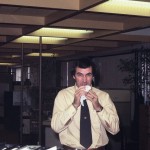
Roger, TC Toronto office, 1975
Henry Dyck, another Air Canada friend and I started around the same time in 1975. We soon met Peter Saunders who took us under his wing. He was some 15 years older, ex-Royal Navy and heavy air carriers man and he knew his way around aviation. After a quick, one half day sign in, I was an Inspector. No initial formal training just into the frying pan and learn from the old hands. Harry Ross was my first direct supervisor, avionics section head. He soon had me out inspecting avionics shops across Ontario Region. It was good work, usually home at night and no shift work. He soon added large avionics manufacturing to my job cart, places like Garrett, Litton and Collins avionics. Dick Berg had really bought into doing audits rather than inspections. This important change was to influence me all my career. He sent us on formal QA auditing courses long before the other regions or even HQ was doing that. Soon Pete asked me to help inspect and audit large air carriers. I soon found that my belief in the licensing of AMEs was sound as I found more knowledgeable people were the one who were licences. By that I mean knowledgably about their responsibilities to Transport and their liabilities to the public. More on that subject later as well.
Harry, Pete and Dick soon saw I liked to organize things and so Henry, Pete and I were tasked to organize AME symposiums in our spare time. The first one had 50 people attend the later ones had several hundred. It was great management training as well. I also took every union course offered on personnel and fiancé and grievances etc, thinking it might help me some day. I had no idea of taking on any management jobs as I was very happy doing inspectors work.
The first two years of my five year stay in the Ontario Region, we were based in downtown Toronto not far from the Union Station and the Island Airport. This may have made sense back in the early part of the Twentieth Century but by 1975 was a real inefficient place to base aviation personnel. In about 1977 we move to a new federal building at 4900 Yonge Street just north of Highway 401. A much better location to access the major airports and industry located outside of Toronto industry. By this time I had accumulated literally thousands of inspections and a large number of big audit experiences. I also had significant experience in equipment investigations and was being to get some manufacturing experience at DeHavilland and at McDonnell Douglas inspecting aircraft and wings respectively.
John McGee, a long time manufacturing Superintendent decided to retire and a job poster went out for his job. Many encouraged me to add my name. This I rather reluctantly did as I was quite content being an Airworthiness Inspector. In addition, I had heard a rumour we might open an office in Kingston, Ontario, a very lovely part of Canada. I sat the competition and was surprised it was all about management and leadership, the stuff I had been studying. The small amounts of technical questions were not too difficult as by now I was really doing a lot of overhaul and manufacturing inspection and surveillance. To my amazement I won and accepted the job. After two weeks of being swamped with inspection and audit reports I called my staff together and we discussed why all this was on my desk. They replied the previous boss was hands on and wanted to give direction on each file. I said, “no way your all experienced people, make your own decisions and keep me posted on controversial matters,” They did an my desk cleared and we could then deal with the background matters and others of high priority. After some hard fought audits with some big aviation companies I really became totally committed to detailed and through audits. Inspection and surveillance gave you intelligence as to where to target your people. I also came to see we needed better and stronger enforcement capability; we had very little at that time.
Well fate is a hunter and works in strange ways. Bill Slaughter had co-authored a report that was extremely critical of Transport Canada’s surveillance of the aviation industry based on the situation in Northwest Ontario. This added to some political concerns relating to aviation safety in general and the Federal Government struck the Justice Dubin Royal Commission on Aviation Safety. My boss and several of us were subpoenaed to testify. I recall dining the evening before with some individuals who it seemed were most interested in what I might say. I did not say much that evening. Next day I testified about lack of training, resources and lack of modern rules and enforcement capacity. I was closely cross examined by Lawyers and the Transport Canada Administrator for aviation. I was surprised how closely they all listened and the challenges to me were few as I recall. Obviously I was small potatoes, only a moment in the Commissions time, but it made a big impact on how I saw my work from then on. In short Justice Dubin’s recommendations set in train a rewrite of all Transport Canada acts and regulations. Significant resource increases came about as did the Task Force to rewrite the Civil Aviation Code. In general it was decided to follow the US FARs. The Administrator, while I was under oath, asked me to consider coming to Ottawa to work. I knew I had to accept and I was soon transferred to HQ as Superintendent Avionics Inspection.
Ottawa Headquarters – Heart of Transport or Disneyland on the Rideau
Professional Pilots, prior to the arrival of Mr. McLeish, had filled nearly all of the senior positions, some of the senior positions in Civil Aviation had been held by AMEs, a few by professional engineers. He believed strongly that the professional aeronautical engineering capabilities of Transport had to be built up. This was after the Toronto DC-8 accident. Most the Transport Canada personnel had some or a lot of military background mainly because the Navy, Army and Air Force were the largest technical training grounds from 1914 to 1970s, the entire mid part of the twenty century. An interesting fact I found when arriving in HQ, was that AME licensing was not in maintenance but in Personnel licensing which makes some sense. However, they had not kept it sufficiently staffed with AME as they concentrated on pilot and air traffic licensing. Another problem this caused was that maintenance did not have control over a key area of maintenance quality, that of the licensed maintenance personnel. One important recommendation of Justice Dubin had been to licence the avionics trade as an AME. Something the licensing section had not been prepared for due to not being closely involved with maintenance matters as Airworthiness was.
John Mew had moved from being my boss as Chief, Manufacturing and Maintenance, onto critical new position as Manager of the Airworthiness Manual Project and Senior Advisor to the Director of Airworthiness. This happened after justice Dubin had recommended a complete rewrite of the Canadian Aviation Regulations. He found that the old system of Air regulations, Air Navigation Orders and the Engineering and Inspection manual were not really clearly enforceable and did not follow standard Canadian Rules making practices. The system was based on the old British system which originally came from naval regulations, i.e. navigation orders. By this time I had been a year in Ottawa after being encouraged to go there by Mr. McLeish himself and my regional boss, Dick Berg, Regional Airworthiness Inspector.
One of my strength that I can talk about now, 2013 is my people and communication skills. I was raised in an environment that trumpeting your own strengths was a major social gaffe, so I never really mentioned any strength I might have. I have weaknesses as well but was always fortunate to have people around me as colleagues and superiors who compensated for them. I applied some of my basic personality traits, like really enjoying working with people and being an organizer. Things I should have been aware of earlier on in my twenties but really did not pay attention to as I was really enjoying the technical work.
Dick Berg held the position known as the RAI, by its initials as Regional Airworthiness Inspector (RAI) had a long history and was a well respected and sought after position. The engineering equivalent was the Regional Aeronautical Engineer (RAE) it also had a long history. I was quite surprised when KDG Owen, Director of Airworthiness asked me to stand in for John Mew as an actor when Paul Neilson was the more senior superintendent in the office. Paul apparently was getting close to retirement and recommended me. It never ceases to amaze me as to how things happen to you in life. By John Mew moving over to be Chief of the Airworthiness manual opened the position to someone else. Again, fate played apart as the most senior person was not interested in the job and recommended me. So in two short years I went from superintendent to Chief, a very senior position then and I was still very young by public service standards. Now what, I thought, better read my job description and get on with it.
So I ended up in the Chiefs job and stayed there for 2 years as an acting Chief until Ken Owen retired and Dr, G.F.Marsters was hired from Queens University. Gerry had a long career as both a researcher for NASA and a professor, he held a PHD in Thermodynamics Engineering. This set the scene for Frank Black, Chief of personnel licensing to approach me and ask if I would accept taking over AME licensing. I should mention that AME training and community college accreditation was already in the Maintenance Division of the Airworthiness branch. I said yes as this would correct all the earlier problems and I believed AME licensing was one of the most important areas of aviation regulation just like Pilot and Air Traffic licensing was. So the transfer in duties and responsibility took place by means of an official organization change which is the government way of doing such things. I now had a problem new responsibility and no new staff. I did however have a plan, Brian Whitehead had come to me and suggested having a power plant inspection section was not necessary and we should not be organized by speciality, like the engineers but by function. I agreed with him and promptly eliminated power plant inspection and assigned its work to the air carrier section and turned his, Brains section, into AME Licensing which still exists today. The Maintenance Division then had a mixture of sections based on different organization thinking. We had the following sections, Avionics, Air Carrier, Licensing and Manufacturing. It was around this time I decided to rename the Divisions from Manufacturing and Maintenance to Airworthiness Inspection to better describe our main activities. Don Sherritt later changed it back after it was made a Branch, one level higher. Don and I disagreed on whether or not manufacturing should be in engineering, like the FAA or not. I would have preferred it being in engineering but when the final decision was made it was Dons call as I was by then Regional Director, Airworthiness, Western Region, located in Alberta.
I was asked to compete to be the permanent Chief after acting in the position for some two years. My only competitor was Roger Menard, Supt. of Manufacturing. Roger was an ex Royal Canadian Navy man and very competent in his work and fully bilingual to boot. I did not think I was a guaranteed winner at all. In fact I was contemplating where I would work if I lost the competition, as it would have been difficult to take a backward step in pay and position. I could have worked for Roger as he was a fine man to work with. In any event I won, probably because my main experience was in the airlines which were a major focus of the division. Roger was gracious and we worked together for nearly 10 more years. Roger stayed on as acting Chief when I left until Don Sherritt arrived, after few years working for Don Sherritt, as a Chief, Roger retired.
The Work and Accomplishments
Working in the HQ of a major government department can be fulfilling, frustrating, astonishing, light and very serious all in one day. Job satisfaction for the more senior people was easily obtained as you set the goals and targets, for more junior individuals it can be frustrating. You may work on a project for years and in one meeting it is cancelled. Therefore operational tasks located in HQ like aircraft type approvals, Maintenance Review Boards and regional audits were eagerly sought after. They included extensive Canadian and foreign travel, a very nice break from the HQ work.
Early on I approached Dave Heakes, Engineering Chief, and asked why his staff were doing my staffs work. He replied because your people, before I arrived, had not wanted to do it. I said I would change that and with his help we did. Soon all the work including being involved in aircraft type approvals was ours. We never looked back. The next challenge was increasing the resource levels in both money and people was a major challenge. In Brian Whitehead’s book he sort of insinuates I used the system, a negative sense. I did but in a positive way. I learned the resourcing system and went to bat for what I needed. Many senior people supported me and our division expanded rapidly. One expansion was in four new NDT inspectors after a Canadian DC-3 lost a wing in Northern Ontario due to poor NDT work.
Owen Feltham, Superintendent of Avionics had been assigned the work on the new AME license for avionics. Brian Whitehead and others were opposed as it seemed to undermine the basic aircraft licence then called,”A”. Brian, Owen and I came up with a multi layered category system which lasted until Tony reformed the entire system later under Don Sherritt watch. Owen later died in Indonesia while on an ICAO assignment.
We had won a major battle in the industry to insist by law that anyone who certifies aircraft after maintenance would be a Licensed AME on Canadian aircraft. We carried this position around the world and were much supported by all major licensing countries Britain, Australia, USA and smaller countries. Only on major country resisted that was France who wanted to remain based on company issued license. I felt this was one of my major leadership accomplishments in my Transport HQ days. Saving the Licensing system and expanding it. John Mew had created a national committee on licensing and training as we carried on its good work as well. Of course, a lot of my time was on regional matters, policy and finances, common to all Chiefs jobs.
An early major task was up dating and creating policy to guide the regions and HQ inspectors. Some of the policy documents had not changed from the 1940’s. Daniel Verrault, a young manager in Airworthiness Programs had a great idea on how to create policy letters, staff instructions etc. We worked together and revamped the entire system; Daniel had some flight experience in the Air Force but majored in aero engineering and went on to be a Director in Ontario Region and then to many senior jobs in industry.
It was apparent that most regions were doing inspections not in-depth audits, something indicated in Dubin. We set out to create a national audit program and guidance material .It was at this time that Tony Soulis came to join us. We had worked together when he was in the central training division under Bob Buckles so I knew his capabilities. He was a hard working and project driven individual who did first class work.
We had created an interesting combination of superintendents whose style and skills were all different but complimented each other. I was the big picture guy, maybe even a dreamer, Brain was the policy wonk, tending to be argumentative, Tony the writer and an extremely detailed man in workmanship, Roger Menard, Manufacturing, solid and hard working and a no nonsense type of guy, my Mr. No., Owen Feltham, solid, very intelligent and methodical person who produced great work and last but not least, Henry Dyck, Pilot and AME who had worked at AC with me, solid, unmoveable in his beliefs and highly operationally focused. Our meeting were sometimes intense but the products have stood the test of time.
My noting of the habits of some my better leaders in the RCAF and civil aviation had shown me many types and I soon noticed which type succeeded for the longest time periods and achieved the most. They were those who put themselves out with troops both military and civil. They were also self confident and not afraid to admit mistakes. They supported their subordinates as well and were not afraid to discipline the non performers. I had also noted they walked around a lot among the workers. I saw this both at the squadrons and at Wardair and Air Canada. I noted that the most respected base commanders wandered around the base even in the evening shifts and asked how are things going. I saw Max Ward doing the same thing and many of his junior leaders and mangers. At AC our Toronto Base manager walked through the shops and hangar line and noted and chatted with techs. My vast amount of reading had demonstrated that successful historical leaders did the same. So when I came to leadership positions as an AME, I copied that manner as well. I undertook all major jobs at least once, Team Leader on National audit of large air carrier, manufacturers and other. I lead a couple Maintenance Review Boards on large aircraft with multi-discipline teams. I also lead the first bilateral work. Once I had demonstrated we could do these things I quickly assigned them to more junior levels so they could take on the responsibilities and get out of Ottawa as well. The people responded and I was never to be let down as I recall.
My years in HQ were from 1980 to 1992. Perfect timing as the government was providing a lot of resources to Transport Canada. It was a good time to be building up the unit and doing some ground breaking work. Eventually even exciting and valuable work can wear you down. It was only after I left HQ to the region I realized how much we had accomplished but fatigue was setting in. Don Sherritt in some ways had it tougher than me as Transport was retrenching during the bad economic times of the 1990’s.It was during that time that Tony Soulis led the reform of the AME Licensing system. The one we had created turned out to be very expensive and complex. I am proud to say that I never had lost my respect for the M licence even though my main background was avionics; I always supported the supremacy of the M. We had even discussed phasing out the ‘E: after 10 years as we thought we could change the AME training enough and increase the hours to cover avionics thoroughly. To this day that has not happened and so the “E” remains. That is the history of the AME license as we know it today.
Back to a Region
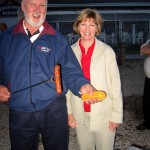
Cooking duties at TC social. Roger and Gerry
After 12 years in Ottawa, most of them as Chief, I accepted a transfer to join Don Douglas in Edmonton as the Regional Director of Airworthiness. In 1995 when the Federal Government had to deal with the deficit problem a grand reorganization took place. Western Region and Central Region were combined to form the largest region in Canada, Prairie and Northern. I acted as Regional Director General of Aviation for one year for both regions as we merged. Then I was selected to be the new Regional director of Civil Aviation, a position I held until retirement, some 10 years later, in 2007. I now will go back and describe in detail some of my experiences.
Leaving Ottawa – New Challenges
I soon found out that Jim Gunderson was ready to retire and Don Douglas, Regional Director General, wanted me to transfer out to Edmonton to fill his position. This was a major change for staff as Jim had been in Western Region for nearly thirty years. I did accept this position and the next 3 years passed by very quickly. One day we heard rumours of possible major changes to Transport Canada’s organization and mandate. This came about because of a major program review in the early 1990’s whereby the Federal Government decided to cut expenditures and balance its books. The Minister and Deputy decided to go ahead with plans to reduce Transport Canada’s workforce from 25,000 to 5,000 employees. To accomplish this involved the devolution of Coast Guard installations, airports, and the national Air Navigation System. This also meant that the Director General’s position would eventually be cut. Don Douglas decided to retire and suggested to the Deputy that I replace him. This happened almost immediately. Along with this major change I was a little shell-shocked especially considering that I was recovering from the loss of my wife of 30 years to cancer. I agreed to take on this position however, and over the next 12 months my major task was to devolve the Air Navigation system to what became NavCanada. Debbie Warren had taken over from Mike Murphy in the old Central Region of Transport Canada but I soon found that I was to be the Acting/ Regional Director General of Civil Aviation for both Regions.
With this major shift in roles for Transport Canada, it was quickly determined that a new alignment of geographic regions was required. The existing Transport Canada Regions of Central and Western did have some anomalies and irrational line-ups. This was an opportunity to correct some of these. The Western Region of Transport Canada had included all of Alberta, the north-eastern corner of British Columbia along the Alaska Highway, all of the Yukon Territory and the western half of the Northwest Territories. With the Regional Office in Edmonton, Western Region had been a reasonable hub for most of the Airports in the Region.
In the Central Region of Transport Canada with its Regional Office located in Winnipeg, there were also some things to consider. This Region included both Saskatchewan and Manitoba, all of the central portion of the Northwest Territories and, because of geographic access, extreme western Ontario from Thunder Bay to the Manitoba border.
These factors contributed directly to the new alignment of Transport Canada regions. It was quickly determined to create five Transport Canada regions through realignment of the six former regions. The Pacific Region was created to take in all of geographic British Columbia, including the north-eastern corner, which had been part of the old Western Region. Ontario Region retained all of Ontario west to the Manitoba border, while Quebec and the Atlantic Regions remained as they always were. The rest of the country became a mega-region known as Prairie and Northern. This Region included all three Prairie Provinces and all three northern areas of the Yukon, Northwest Territory, and the newly created Nunavut Territory. Prairie and Northern Region subsequently covered nearly two-thirds of Canada’s landmass. The headquarters for the region was decided to be in Winnipeg, Manitoba. It is also significant to note that it also contained the five international airports of Winnipeg, Regina, Saskatoon, Calgary and Edmonton.
PNR Civil Aviation was not officially formed as an organization until 1996. The task of organizing the entire region at one time was deemed to be too large a task so Civil Aviation Branch was rolled in last and added in 1996. Mike Murphy and Don Douglas had departed as Regional Director Generals of Civil Aviation for Central and Western Regions respectively.
I was asked to take over Western Region and Debbie Warren took over Central Region. We began working together to devolve ANS to NavCanada as well as to create the new PNR Civil Aviation Branch. Once amalgamation was officially announced, Debbie elected not to compete for the new position of Regional Director of Civil Aviation Branch PNR. A national selection board was held and I was appointed as the new Regional Director. At this time Don Spruceton was Director General of Civil Aviation for Canada and Scott Broughton was selected by the DM Nick Mulder to be PNR’s first Director General.
My next major task was to select the Civil Aviation management team and to determine the scope of his regional position. I started by identifying all the resources he had, both human and financial. The new management group included Mike Barbeau, Jim Stewart, Kate Fletcher, Judy Plamondon, Dick Laird, Debbie Warren, Fred D’Amico, Fred Wright, Dianne Klassen, and Wayne Wetterberg.
Facts about Prairie & Northern Region (PNR)
PNR, with its vast geography includes the three Prairie Provinces as well as all three of the Northern Territories. This makes it a most unique Region in Transport Canada’s network. Covering 5,873,150 square kilometres, it contains 60% of Canada’s land mass, but it only has 18% of its population (slightly less than 5 million); subsequently the population density is only 0.83 persons per square kilometre. Geographically it not only has Canada’s highest peak, Mount Logan, YT., which is 5959 meters above sea level, but it also contains 27 of Canada’s highest 35 peaks. It also contains Canada’s longest river, the Mackenzie, which is 4240 kilometres long, as well as 25% of the world’s fresh water. PNR also has the world’s largest island (Baffin, NT. Which is 507,541 square kilometres)?
PNR also has some interesting weather facts. The lowest and highest recorded temperatures at a Canadian airport were at Inuvik (minus 56.7 degrees Celsius), and at Regina (plus 43.3 degrees Celsius) indicating a difference of 100 degrees Celsius.
The vastness of PNR can be realized through comparative distances. From Edmonton to Winnipeg is 1350 kilometres, to Yellowknife is 1755 kilometres, and to Whitehorse is 2048 kilometres. The distance from Resolute Bay to Calgary is 5500 kilometres while the distance from Lethbridge to Eureka is 7000 kilometres. By comparison the distance between Vancouver and Halifax is only 6000 kilometres.
The aviation industry is of critical importance in PNR. Often air transportation is the only means of travel and support for many northern communities. Statistics on transportation reveals some interesting facts. The total length of highways in PNR is 481,763 kilometres. The total airfreight in PNR exceeds 100,000 tonnes annually and the total number of air passengers exceeds 20,000,000. The number of aircraft registered in PNR is currently over 8500 which utilize the 90 regional and northern airports in PNR. National airports in PNR include Calgary, Edmonton, Winnipeg, Saskatoon, Regina, Whitehorse, Yellowknife, and Iqaluit. Three of Canada’s top ten airports for jet traffic are in PNR and these include Calgary, Winnipeg, and Edmonton. The only airport still owned and operated by Transport Canada in PNR is the remote airport at Churchill, Manitoba. Since PNR includes the three Prairie Provinces as well as the three northern territories, business must be conducted with 6 jurisdictions. With 90 airports, many of which are in extreme northern climes, PNR was very challenging and interesting area for Civil Aviation Branch to complete its oversight and regulatory responsibilities.
One major reason I agreed to do all this was because of the great support I received from the existing Directors. I soon found that all the Regulatory and Air Navigation System Directors managed very effective branches. I had a lot of staff with total for the two Regions being about 4500 as well as a budget in excess of $400,000,000.00. My main responsibility was overseeing the devolution of ANS to NavCanada and overseeing aviation regulation. There were lots of challenges all the way from dividing up the furniture and pens to determining which personnel would be retained. One of those who stayed was Mike Barbeau, and he became a great help to me over the next few years. During the year of the major organizational changes, plans were made to create new Regions in Transport Canada. These would focus on safety and security with a smaller policy role. The creation of the new Region of Prairie and Northern (PNR) from the realignment of the old Western and Central Regions was done in two stages. Firstly, Civil Aviation was split off from the rest of the branches or more accurately, left on its own. The Deputy then hired the first Regional Director General for PNR, Scott Broughton. He arrived and brought some key staff with him. Once this was completed the aviation branches were combined into one organization in the new Region. I was asked to continue acting in the new position until it could be staffed. I was not really interested in applying for the position as I enjoyed my Maintainer’s Manager Job. However, after doing the job for a while and being encouraged by my colleagues and my new wife to be, Gerry, I threw my name into the competition. Much to my surprise, I was successful and was appointed to the position in 1996.
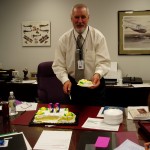
Roger’s 60th Birthday at the Winnipeg TC office, 2003
Traditionally, these positions had always required someone who had a pilot’s license and I was an Aircraft Maintenance Engineer (AME). The Director General of Civil Aviation in Ottawa was Don Spruceton and he had decided to widen the talent pool to include Engineers and AME’s. Since this was a major departure from normal practice and I was the first, I had some concerns about managing a large group of Professional Pilots and Professional Engineers. I found out that my major challenge was not managing a diverse group but merging Central and Western Regions into one new region.
One of the first problems I encountered was the fact that the classification for my new job came out as an EX01, which surprised me as my acting position was at the EX02 level. Apparently there was some infighting going on between those who felt the Ottawa positions should be one higher than those in the Regions and those who felt the regional jobs were as important and as complex as those in HQ. I personally felt the regional jobs mirrored the Director General Aviation job in Ottawa, as they were responsible for all aspects of aviation. The HQ functional directors were certainly in-depth jobs but their jobs lacked the breadth of those in the regions. In the end the Regional Director Generals won the argument and these positions were upgraded to the EX02 level. In the final analysis I believe the regional positions were properly classified and this was proven to be correct as everyone moved forward.
My first task in this position was to become familiar with what I had been assigned to do. I found I had about 190 employees and a budget of $13,000,000.00. Over the next few years we were to grow to have 250 employees and a budget of $25,000,000.00. This was not just growth for growths sake, as my early assessment indicated that initially we had been severely under resourced. This was hidden largely because I had so much surplus money from the huge ANS budgets. A campaign was soon started to overcome this deficit. Due to good staff work and proper strategies and tactics, and with good support from the HQ Director General and the Regional Director General, we were supported slowly but steadily. We also set about doing our regulatory work in an improved manner and we took on tough files. This enabled us to credibly argue our case.
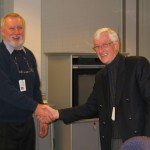
Dave Murray Regional Director General Presenting Roger’s 35 year Long Service Award, TC Winnipeg Office
I studied carefully my job description and set out to select the regional management team. We had an unusual situation as the merging of the two regions into PNR left us with some surplus managers. I also had to deal with the issue that I was provided with the funding for salaries and overtime for only the people on staff but not for any vacant positions. I recall I had 190 employees to start with but I only had two support personnel in my office. I told Scott Broughton that this was too low but he said to try and see how it would work out. We really didn’t have much of a choice as the Liberal Government of the day was going through a program review and no other monies were available for PNR. It soon became very apparent just how short-funded and short-staffed the transportation regulatory part of the two previous Regions really was. I soon selected a management team and set out to work this all out. I called a Manager’s conference in Saskatoon and there we assigned staffing levels and money to all divisions. The Maintenance and Manufacturing division had the largest shortfall because they had several vacancies while others were either fully staffed or very close to it. I was in a position of not being able to lay anyone off from the inspection staff as we had agreed to support existing levels and work on a longer-term strategy to build up the branch. I also soon concluded that the real “pointy” end of my operation was in the oversight of the operating (flying) side of the air carriers so I concentrated on that over several years. I also wanted a strong enforcement capability and set out to support that function. It should be noted every division had needs and priorities, but through good debates and team building, I was able to gain the managers trust and consensus on most decisions. System Safety was also an area that needed attention as it had significant issues. Fred D’Amico and later Wayne Woloshyn set out to correct these problems and within a few years they had them resolved. Enforcement became more open to working closely with the divisions and that proceeded well. Maintenance always felt they were understaffed and that caused me some concern but gradually we convinced HQ of our resource requirements to improve their situation. The problem regulatory bodies always have is that it is difficult to win resource arguments without accidents! We did not use scare tactics and always tried to do the best we could with what we had. This approach, and our results and the realities of the large area of PNR, allowed HQ to support us. They also saw we would take action and that helped as well. I can also say my other regional colleagues on our regional executive committee were supportive as were the RDCA’s in other Regions. Everyone could see the challenges we faced.
Over the years the annual budget and human resource workshops allowed us to make informed decisions regarding our workload and oversight priorities. While we concentrated some energy on these matters, it did not distract us from the front-end work. The Region underwent a severe test with the first major air carrier event involving a new carrier. We worked very hard under very trying circumstances and in the end were vindicated both in court and in opinion. This set the stage for future years. We also had to deal with several provincial issues such as heliports and airports to bring them into compliance with the new rules. It should be noted that when TC devolved the ANS system and the airports and started to require full regulatory compliance, this was a major shock to many of them. They and we had to make a culture change where Transport Canada had moved from being a service provider to regulator. Over the years we had to remove several air carriers’ certificates. In addition, there were many smaller enforcement matters to deal with. These events highlighted the maturity of our regulatory system and our ability to use it. Industry came to respect our fair but firm approach and I believe our staff did as well. This paved the way to move to a new safety management systems approach.
Over the years we had several Director Generals in Civil Aviation. First there was Don Spruston, then Art LaFlamme and Merlin Preuss, who was my last HQ boss. Don modernized the air regulations and standards and brought great communication skills to the relationship with the aviation industry. Art LaFlamme brought a more dynamic application to the system and he had to deal with September 11, 2001. Merlin Preuss made a major effort to ensure we had widespread industry compliance with the current rules as he moved the organization into the Safety Management Systems era. They all had to deal with organizational issues and many large aviation accidents and incidents. PNR posed particular problems due to its unique geography and its very large industry base. In addition, the merging of the old Western and Central Regions was not completed overnight. However, in the end it all came together. Civil Aviation was also soon moving to a new day and to new ways of doing business.
In PNR the first Regional Director General was Scott Broughton who stayed with us for a little more than one year. He managed the creation of the region and the initial resource distributions. He also made decision to allow Directors to choose which city to live in. This was good for me personally but in the end could not be sustained without Winnipeg losing HQ status to Edmonton based on Directors selection. Alberta’s much lower taxes were a major draw for new directors. Mike Shumsky acted as DG for about one year. A selection was held and Dave Murray was selected as RDG. Most of my time as RDCA was under the leadership of Dave. He rapidly took an interest in Civil Aviation and become well known to us and participated in many meetings, conferences etc. and became a major supporter of our work. Dave retired as the PNR DG around 2007.
The resource challenges consumed a lot of my energies over the years. I approached this issue by convening annual conferences with all of my managers and their administrative officers. We went to various parts of the Region such as Saskatoon, Red Deer, Gimli, Calgary, and several other locations and each meeting became known by its location. We were able to develop a collegial approach to the issues and assign resources to priority areas. Commercial and Business was seen as a high priority area and this worked well over the years. Maintenance was next and so on. These meetings also had a social aspect, which added to the team building we had undertaken. In Red Deer we stayed at the old airbase in Penhold. Some staff really enjoyed it while others hated it. I purposely went there to show them we could save money as it cost us $20 per night!!! Dave Murray, our RDG joined us and stayed in the barracks as well, but some HQ staff stayed downtown which caused some tongue wagging with the Region in the barracks and HQ staff downtown in a hotel!
Another labour-intensive mission was the plan to visit all areas of the large Region and meet the industry in their own environment. This took me five years to accomplish, as PNR is so vast. This really paid off with our clients however, in that they came to know me as someone they could talk to and telephone or e-mail if they had problems. At first some Inspectors were worried and some managers as well. I countered these concerns by not using any information to harass them and I also included them in meetings and conferences. I was able through these means to bring the old attitudes from the Western and Central portions of PNR into harmony as far as program delivery was concerned.
Over the years we had many large regulatory files to deal with including ongoing litigation from previous accidents and incidents. We set a rigorous inspection and audit program followed by the required levels of enforcement. We needed to create a level playing field, which helped HQ to put the Safety Management System (SMS) in place. We created or adopted the “war room” concept to bring all the necessary Inspector’s, Superintendent’s, and Manager’s expertise into one place to sort through our options and choose the best course of action. A selected Manager, the ROM, or the Director, depending on the situation and complexity of the issues, chaired these meetings and this worked very well. We also tried new ideas of surveillance with special teams and campaigns. All of this was supported by a major communications exercise by Managers and the Regional Director to get out and about explaining our program and answering questions. This all worked to give us excellent results. HQ under Merlin Preuss was also engaging in a major cultural change towards SMS at the same time. This made for interesting discussions and decisions.
The thing I remember most in my career is that I constructed a well-oiled team, which functioned very well under pressure. We made sure all points of view were raised and considered in our “war room” set-ups. Although we did have our share of HR issues common to any large group of people, this never seemed to interfere with our major work. We had lots of discussions on how to complete certain tasks but not on the overall mandate. The same applied to work between the Regions and HQ. There were, and still are, and will always be, big issues to deal with. I can say however, that Civil Aviation presently, is better-organized and trained, with better guidance material and regulations, than it ever had been over my 32 years in Transport Civil Aviation.
Around 2005 I realized I might have to retire! Life had passed so fast. Dave Murray, DG, needed someone to help out on some large projects and to act for him during his frequent travels, mainly to Ottawa. He also wanted to select my replacement before I left so I could mentor him or her. After consulting Gerry and trying to read the tea leaves I accepted. SMS and a possible reorganization was coming and being frank I felt younger blood should take that challenge on. I accepted the new position and two years later retired. My career as an AME in Transport Canada had terminated and I move onto the final phase of my life.
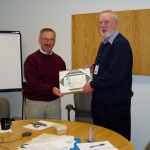
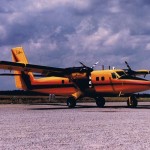
Leave a Reply
You must be logged in to post a comment.